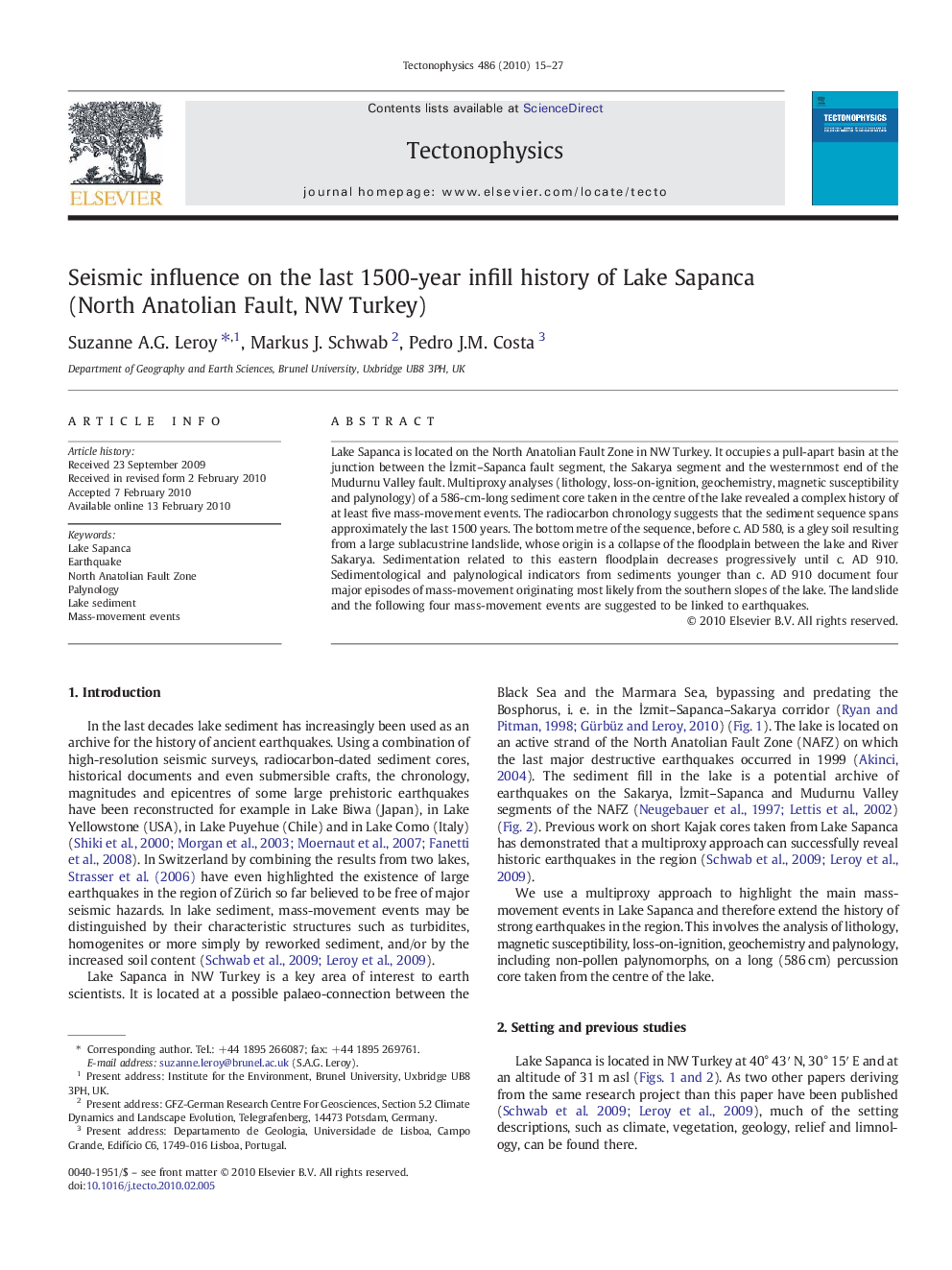| Article ID | Journal | Published Year | Pages | File Type |
|---|---|---|---|---|
| 4693618 | Tectonophysics | 2010 | 13 Pages |
Abstract
Lake Sapanca is located on the North Anatolian Fault Zone in NW Turkey. It occupies a pull-apart basin at the junction between the Ä°zmit-Sapanca fault segment, the Sakarya segment and the westernmost end of the Mudurnu Valley fault. Multiproxy analyses (lithology, loss-on-ignition, geochemistry, magnetic susceptibility and palynology) of a 586-cm-long sediment core taken in the centre of the lake revealed a complex history of at least five mass-movement events. The radiocarbon chronology suggests that the sediment sequence spans approximately the last 1500Â years. The bottom metre of the sequence, before c. AD 580, is a gley soil resulting from a large sublacustrine landslide, whose origin is a collapse of the floodplain between the lake and River Sakarya. Sedimentation related to this eastern floodplain decreases progressively until c. AD 910. Sedimentological and palynological indicators from sediments younger than c. AD 910 document four major episodes of mass-movement originating most likely from the southern slopes of the lake. The landslide and the following four mass-movement events are suggested to be linked to earthquakes.
Related Topics
Physical Sciences and Engineering
Earth and Planetary Sciences
Earth-Surface Processes
Authors
Suzanne A.G. Leroy, Markus J. Schwab, Pedro J.M. Costa,
